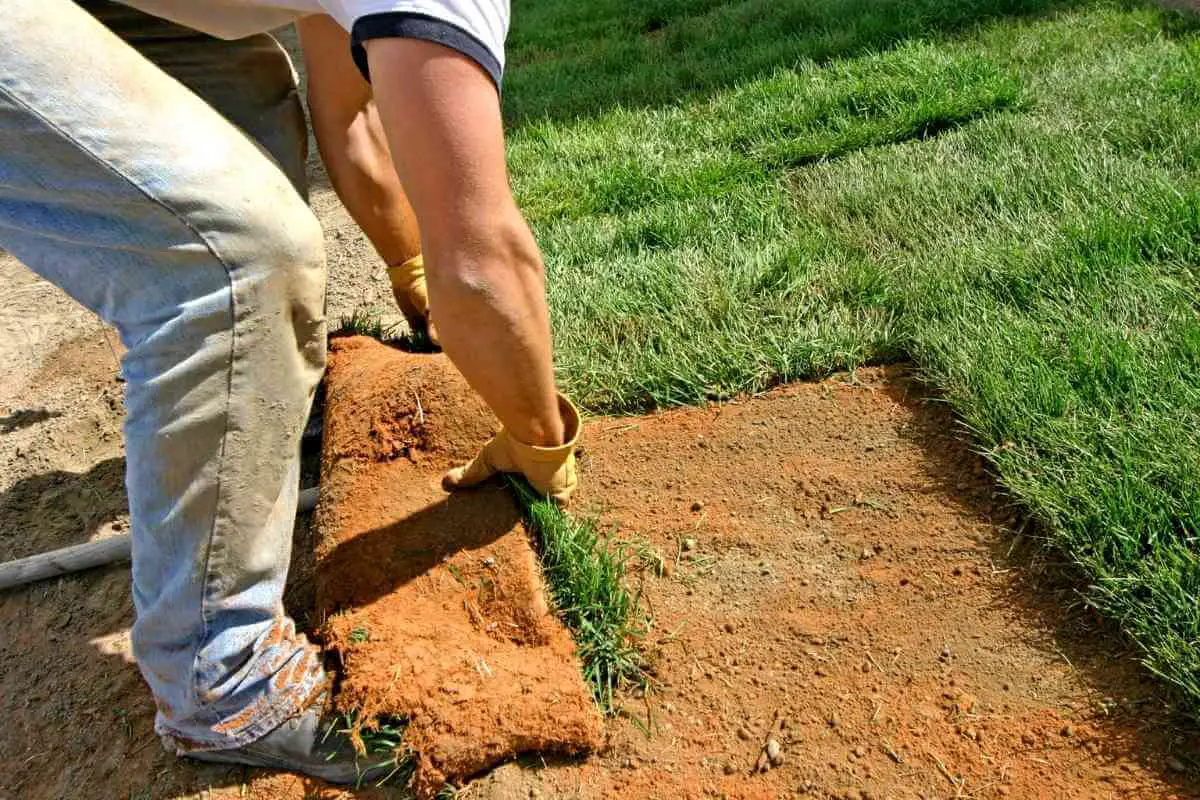If fertilizer is supposed to help a lawn grow faster and fuller, can I put starter fertilizer on new sod?
You can and should use starter fertilizer when you put down new sod. You should use a starter fertilizer with a higher phosphorous and potassium level than you usually would for a lawn. It should also be applied to the soil and not directly onto the freshly laid sod.
The Right Fertilizer
It all starts with the right fertilizer. Fertilizer has three numbers.
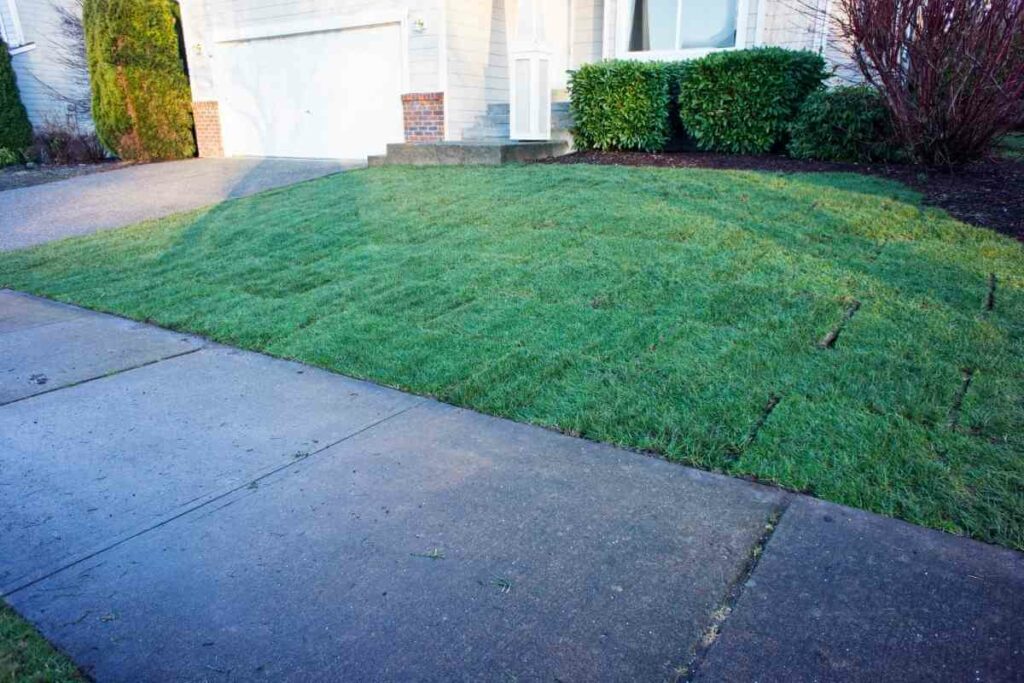
These numbers are the NPK analysis, and they show the ratio of nitrogen, phosphorus, and potassium in the fertilizer:
- Nitrogen is what promotes growth and makes your lawn greener.
- Phosphorous is the element that encourages root growth and development.
- Potassium makes your lawn hardier so it can fight off diseases, and tolerate hot and cold temperatures.
Starter fertilizer is the kind you are going to want for your new sod.
Different brands of fertilizer have different NPK ratios, but you will want something around 6-20-20.
More About The Ratio
Notice how there isn’t a lot of nitrogen, but plenty of phosphorous and potassium? There’s a reason for that.
Many of the roots from the sod were just severed from being harvested.

Once you place the sod on your lawn, you want the roots of the sod to grow well into the dirt, and phosphorous will help with that.
Without a good root system, your sod may die, and you’ll have to start over or fix certain areas.
Potassium is also high in a starter fertilizer. This helps the new sod avoid being shocked by the move, the application, and adapting to the new dirt.
Nitrogen won’t make a big difference in the beginning.
Your sod will already be alive and green, and adding too much nitrogen, in the beginning, will make your lawn focus more on growing the blades of grass than the roots.
This is why there’s a small amount of nitrogen, but not too much.
Before you add your fertilizer or sod, you should have a soil test done.
This will analyze the levels of nitrogen, phosphorous, and potassium:
- If your soil has high nitrogen content, you aren’t going to want to purchase a fertilizer with any nitrogen.
- If the phosphorous is high, but potassium is low, you might want to consider a fertilizer with more potassium than phosphorous to balance the ratio.
Fertilizing and Watering Schedule for New Sod
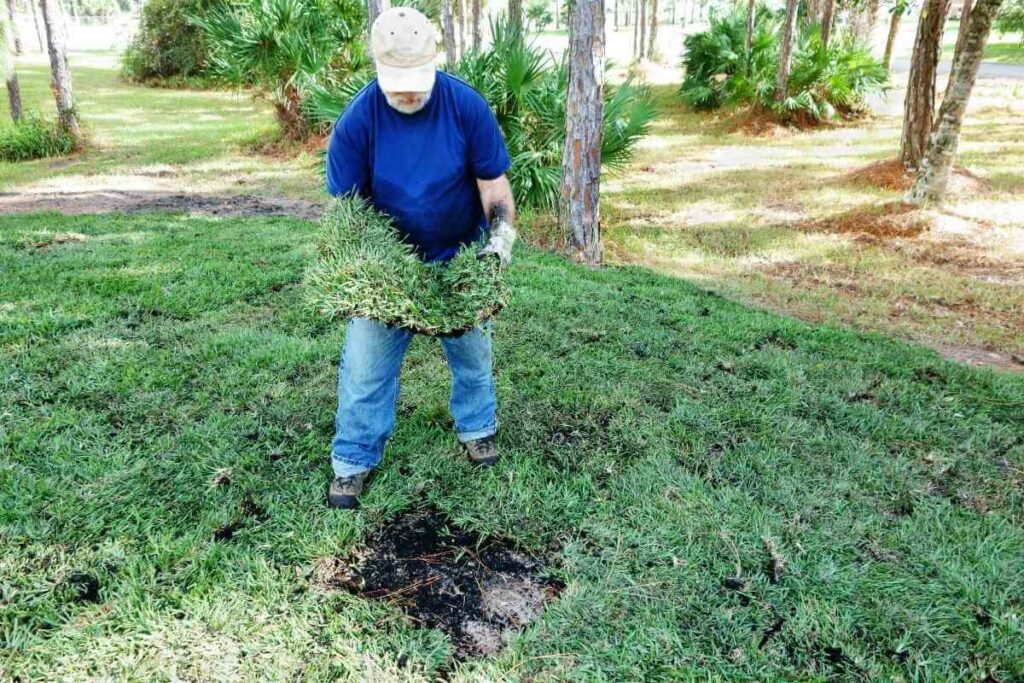
Your new sod is going to be extremely vulnerable and you’ll have to be careful about your fertilizing and watering schedule.
To help you, we’ve made a schedule for you.
Day 1
Before applying your sod, your lawn will need to be in the right condition:
- You should have added your fertilizer into the ground and given your lawn a good watering.
- The water should be able to travel up to 4 inches below the surface. If you tilled your fertilizer into the soil, this should be easy.
- After your sod has been placed, use a roller to flatten it into the soil. This removes as much space as possible between the roots and the soil, so the roots can reach the fertilizer and water they need.
- Finish day 1 with a light watering to replenish any water lost during the day.
Day 2-9
From day 2 to day 5, you are going to want to water your lawn twice each day; once in the morning, and once in the late afternoon.
Do your best to stay off the grass during this stage.
A good sprinkler will help you cover your lawn with the least amount of needing to walk across the sod.
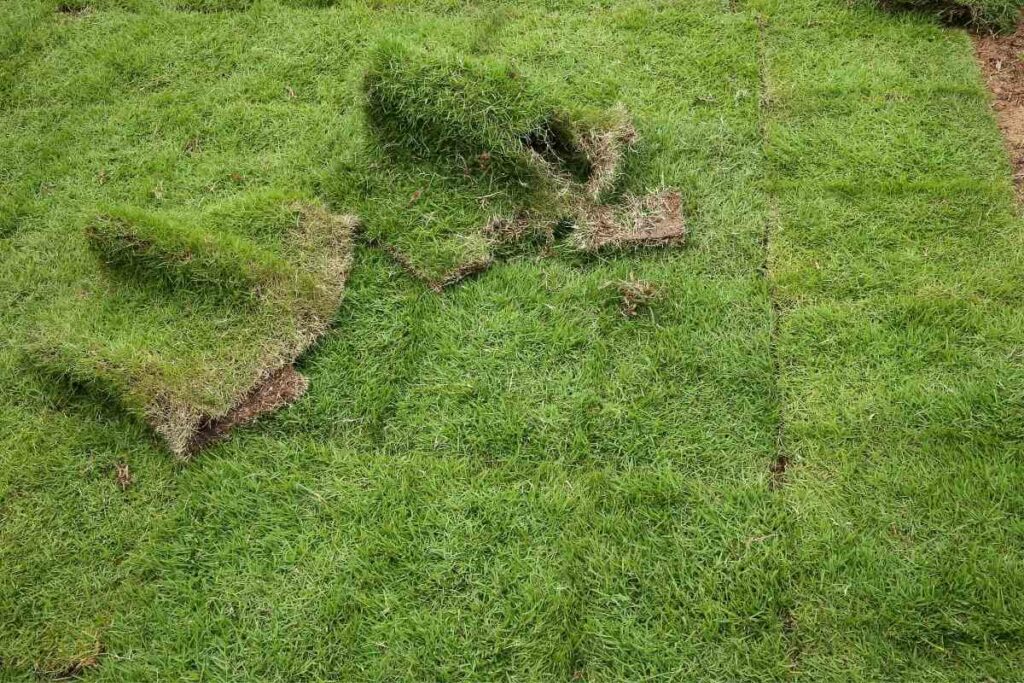
Check the edges and seams of the sod to see if any areas are drying out.
If any areas look like they are drying out, hand water them to make sure that area is getting a thorough watering.
If rain is in the forecast, you probably won’t need to water the sod.
This of course depends on how much rain you are expected to get, and a quick shower isn’t going to be enough water for your sod for a day.
Days 10–12
During these days you can start watering your lawn only once per day instead of twice.
On day 10, left a corner of the sod and check if there is any root growth.
If small white roots are extending past the thatch of the sod, you’ve been doing a great job.
Days 13–15
By day 13-15, the roots should be growing well enough that it takes a little bit of effort to lift the piece of sod from the soil.
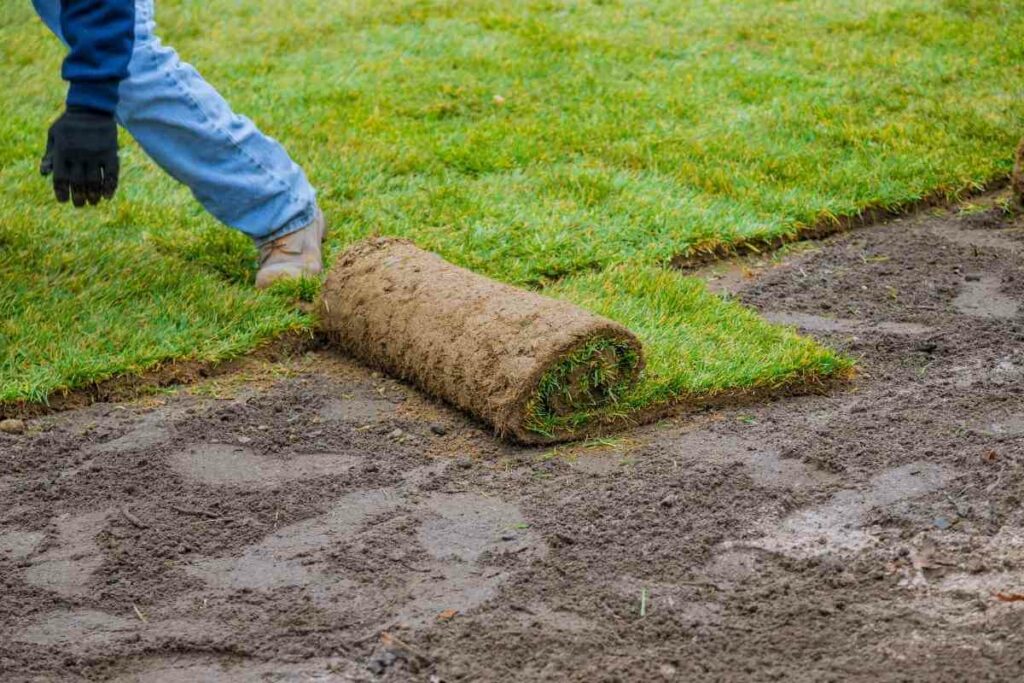
If your sod is at this stage, it’s time to mow it for the first time!
Use the highest setting to only take the very tips off the grass. You can also slow down watering to once every other day.
Days 16–20
During days 16-20, if your roots have been growing and your sod looks green, you can apply fertilizer again.
Follow the instructions on the fertilizer and spread evenly.
You should also start decreasing the watering once a week.
Final Thoughts
Using a starter fertilizer for your new sod is highly encouraged.
This will give the grass and the roots a better chance of surviving after being installed, which is a great investment for your lawn.
Be sure to apply it to the soil, and not directly on top of the sod, give your lawn plenty of water, and your new sod will look like a lush lawn in no time.
